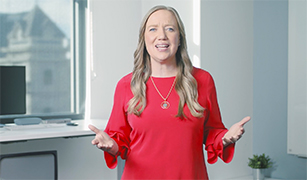 Steve Willis is a Master Trainer and Vice President of Professional Services at VitalSmarts.
Steve Willis is a Master Trainer and Vice President of Professional Services at VitalSmarts.READ MORE
![]()
![]() When participants are creating their own change plan in Influencer Training, how can I help them create an actual results statement instead of getting bogged down describing vague goals or strategies?
When participants are creating their own change plan in Influencer Training, how can I help them create an actual results statement instead of getting bogged down describing vague goals or strategies?
I have a question from the Influencer Training, regarding Clear Measurable Results.
I found some very helpful information on the Think Like an Influencer web site. Joseph spoke about how this step breathes life into the Influence Challenge—by helping us avoid confusing means and methods with the end result. The connection that I don’t want people to miss is that this result statement will impact their personal motivation (Source 1). It should be answering why they should care about this challenge.
Yet I find it hard to get people in the class to get beyond vague goals (such as team building) or making their clear measurable result a vital behavior (such as hand washing compliance). I have tried to help participants that are coming up with vague goals by asking them such questions as, “What outcome are you not achieving or not achieving well because of poor collaboration and teamwork?” Hand washing compliance is a substantial goal, but it is a vital behavior for reducing nosocomial infections. What suggestions do you have for facilitating this part of the program?
I have found that some people have to think about their result statement between classes. It takes time for some people to absorb and sort out results from vital behaviors. As a facilitator, should I have the participants share their goal with me by the second day (we usually have a week between Day 1 and Day 2) to see if they are on the right track?
![]() This is a great question, and one that many people struggle with.
This is a great question, and one that many people struggle with.
When we were first designing the course we had a bit of debate about whether to include results in the training. It seemed like most everyone was familiar with SMART goals, and the importance of having measurable outcomes. And so we wondered if there was a lot of value in covering it again. In the end we included it because even though people know that they should have measurable results, they aren’t always very skilled at coming up with results that are measurable, what you really want, and time bound. So with this in mind, here are some ideas that may be helpful.
I’ve found it really useful to have a discussion about common hang-ups and snags when introducing the three criteria of an effective result. We talk about examples of results that are specific and measurable, what you really want, and time bound, and then I ask the following question: “As you think about these three criteria, where do you see people in your organization struggle most?” People say things like, “What you really want.” At which point you’re able to have people give examples (both obvious and more subtle) of how and where people get off track. You can even use some of the common mistakes you’ve gotten from previous classes as examples for the class to analyze, and get them to describe why it doesn’t measure up.
I think your suggestion of checking in with people on their result is also helpful. At the end of day one, participants get a period of time to apply their newly learned skills to their own influence challenge. This is a great time to float between groups and check on how they are coming along with their results statement. You can coach, provide some examples, and in some cases, even give them assignments to do some research before they get too far into their Influencer experience.
Now, there have been times where I’ve run into some tricky situations (not all influence challenges are created equal). You mentioned hand washing as an example of means/ends inversion. We worked with a hospital that desperately wanted to achieve higher levels of hand washing compliance. We asked them the question you suggest (which by the way is a great way to get people to evaluate whether they’ve identified a vital behavior or a result), and it turned out that while they were interested in reducing nosocomial infection rates, they didn’t feel they could economically measure and prove a direct link between hand washing and their desired result. So in this case, they focused on hand washing as a vital behavior and a result. They realized that getting stuck on the result could derail the benefit from increased hand washing compliance so, in essence, they use hand washing as a surrogate measure of their desired results.
Hopefully these ideas will be as useful to you as they have been to me, and if you have additional tips that have worked for you please send them our way.
Steve








